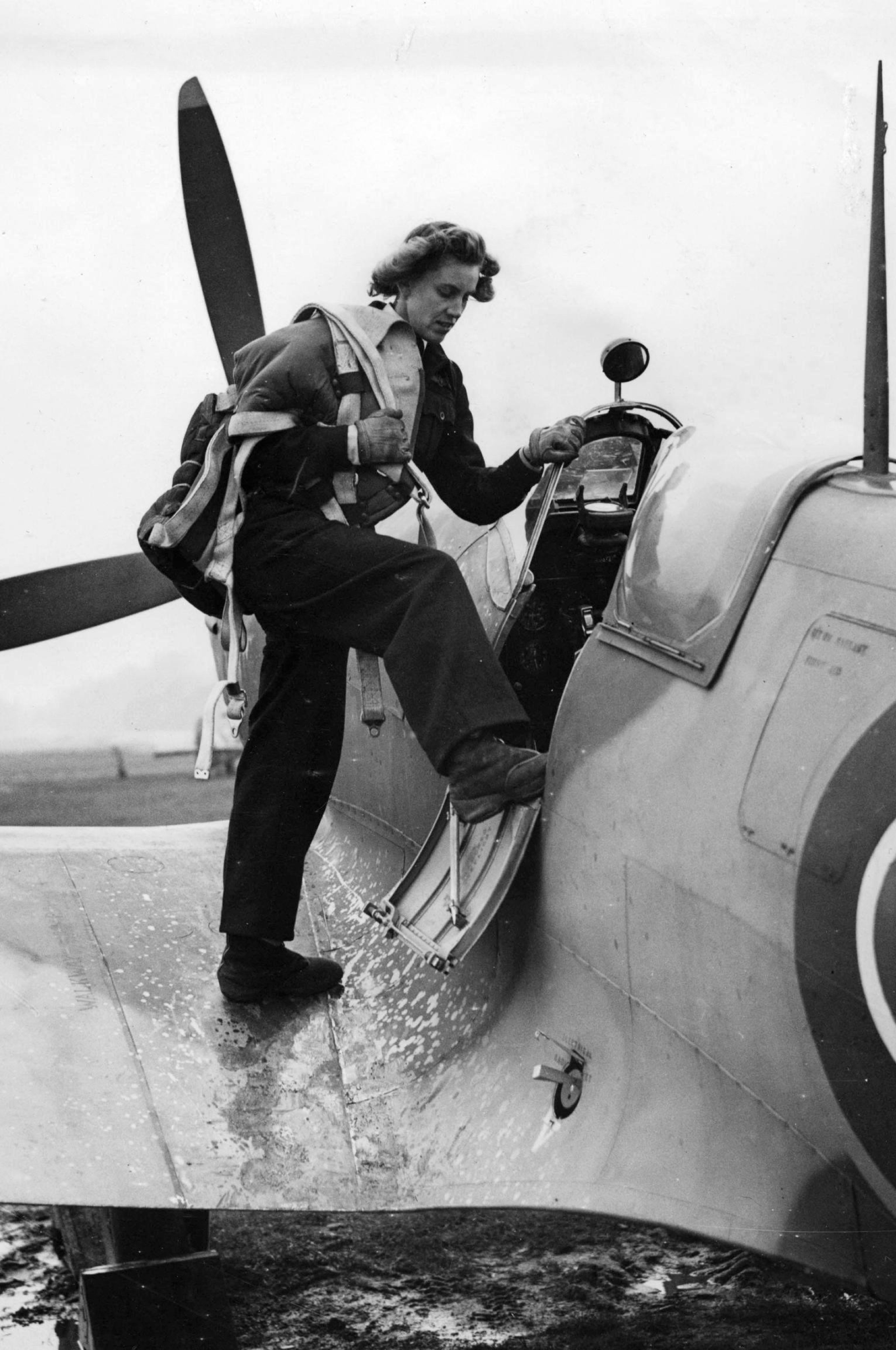Lettice Curtis: Second World War pilot
The woman could fly with a water-filled jam-jar containing a goldfish on her aircraft’s passenger seat, and land without spilling it

Lettice Curtis was the best British female pilot of the Second World War. The first to fly a four-engined Avro Lancaster bomber, she was the most skilled of only 11 women who ever passed the test to do so, and the longest-serving of the 168 who plied Britain’s wartime skies as members of the Air Transport Auxiliary.
Such was her superiors’ confidence in her that only a month after she ferried her first “Lanc”, ED 396, from RAF Llandow in south Wales to RAF Elsham Wolds in north Lincolnshire in April 1943, she became part of the preparations for the Dambusters raid, Operation Chastise, led by Wing Commander Guy Gibson, VC.
Curtis delivered Lancaster ED817/G from Farnborough to 617 Squadron at RAF Scampton in Lincolnshire in May 1943, only days before the moonlight raid on the Eder, Mohne, and Sorpe dams on the Ruhr in Germany on the night of 16-17 May. The “G” in the serial number signified that the Lancaster was a specially modified one that carried secret equipment and required round-the-clock guard when not in the air.
In fact, ED817 was not flown on the raid, but it was part of the same batch of aircraft that would breach two of the dams’ retaining concrete walls with “bouncing bombs” – and that would be immortalised with names such as A-Apple, P-Popsie, and M-Mother.
“We had no idea where the Dambusters were based and so I had no reason to know that this was a specially modified aircraft,” Curtis said later.
The woman who could fly, as she once did, with a water-filled jam-jar containing a goldfish on her aircraft’s passenger seat, and land without spilling it, had hardly had as much equipment as a radio to use before she took over the controls of large aircraft such as the Lancaster and the Halifax. She made her first solo four-engined-aircraft landing in February 1943 at RAF Pocklington in Yorkshire in an armed operational Halifax.
ATA pilots were expected to deliver aircraft to wherever they were needed, from factory to squadron or airfield to airfield with the bare minimum of instruments, radio-less, and navigating visually along railway lines or other landmarks. This was partly to save money – and partly so as not to be detected by the enemy.
Curtis joined the ATA in July 1940 and worked almost continuously until its disbandment in November 1945. Her only break was a spell in hospital after her only crash, on 22 April 1944, when she cut her head and gashed her leg landing a Hawker Typhoon which somersaulted on a 100mph forced touchdown at Langley, Berkshire, after its engine had cut out with a fuel fault.
She was the first woman to join No 1 Ferry Pilots Pool at the ATA’s headquarters at White Waltham, Berkshire, commanded by the handsome ex-Guards officer and millionaire private aircraft-owner Frankie Francis, who was among the many men won round from scepticism by her performance in the air. She is said to have been in love with him, but their intimacy seems to have consisted of game after game of backgammon. While based at White Waltham she took part in the delivery of Spitfires to the US aircraft carrier Wasp in the Clyde in 1942, to be taken to the Mediterranean to relieve the siege of Malta.
Curtis became a celebrity when she was introduced to the US First Lady Eleanor Roosevelt at White Waltham on 26 October 1942 as the first woman to be trained on four-engine bombers. At the time she had not yet completed the course, and the newspaper publicity put extra pressure on her. Before being awarded the qualification, a “Class 5” certificate, she was asked to do 10 solo landings. Men were only required to do seven.
After the war she worked for the Ministry of Civil Aviation, then Fairey, the aircraft manufacturer. On its being taken over by Westland, she moved to the plane maker Folland. In 1962 she joined the new Air Traffic Control Experimental Unit and helped to plan the control establishment at West Drayton near Heathrow airport. She also took part in air- and motor-boat races, setting the British women’s national record in 1948 for doing 313.208mph in a Supermarine Spitfire XI over 100 kilometres.
At the age of 22 she had found herself drawn to the idea of being a commercial pilot. She used the £100 left to her by her grandmother to learn on Cirrus Moths at Yapton Flying Club, West Sussex, and qualified for a “B” licence on a Tiger Moth in 1938.
Her family had been wealthy enough to have her educated at Benenden School in Kent. Her parents lived at Denbury Manor near Newton Abbot in Devon, where she was born, and she was the fourth of seven children.
Curtis went up to St Hilda’s College, Oxford in 1933 to read mathematics, but regretted her choice of subject, and devoted herself to sport. She captained university teams in fencing and lawn tennis – and her competitive instincts stayed with her into her seventies, when in October 1992, aged 77, she gained a licence to fly helicopters. She never married.
Eleanor Lettice Curtis, aviator: born Devon 1 February 1915; died Berkshire 21 July 2014.
Subscribe to Independent Premium to bookmark this article
Want to bookmark your favourite articles and stories to read or reference later? Start your Independent Premium subscription today.

Join our commenting forum
Join thought-provoking conversations, follow other Independent readers and see their replies